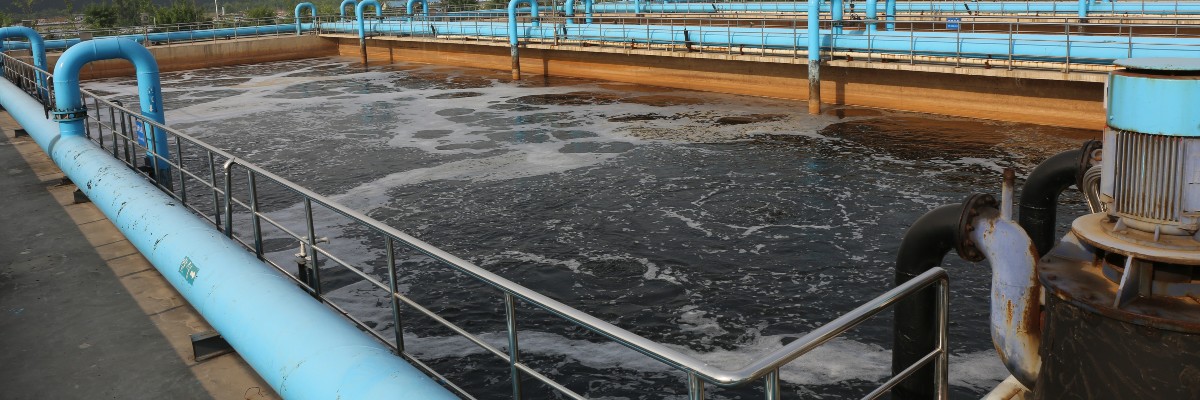Blog
Wastewater Treatment: Activated Sludge Plant Designs

The activated sludge process is commonly used in wastewater treatment because it can clean the water in a shorter amount of time. But how do you know which design is right for you? In this blog, we look at various activated sludge plant designs for the optimal wastewater treatment solution.
Activated sludge describes a wastewater treatment process in which the microbes that grow on the contaminants in the wastewater are recycled; i.e., they stay in the system.
By maintaining a higher population of active microbes or biomass, the treatment time required to reach removal goals is shortened. In addition, the microbes are acclimated to the composition of the wastewater and “selected” or enriched in the microbes that are most efficient.
Activated Sludge Plant Design Variations
There are quite a few variations in the design of activated sludge systems. The simplest consists of an aeration tank and a clarifier.
Microbes grow in the aeration tank and settle to the bottom of the clarifier. The concentrated suspension of microbes is partially returned to the aeration tank (return activated sludge or RAS) and partially wasted (waste activated sludge or WAS) so that the concentration of microbes is relatively constant in the aeration tank. The amount wasted is approximately equal to the amount of growth or increase in the amount of biomass.
Activated Sludge Plant Design Modifications
Many plant designs have additional modifications for processes, such as:
- Screens to remove large solids
- Primary clarifiers or dissolved air flotation to remove finer solids and/or floating matter such as fats, oil and grease (FOG)
- Sludge thickeners, centrifuges or belt filter presses to reduce the volume of WAS to be disposed
- Sludge digesters to reduce the mass of WAS to be disposed
- Chlorination/dichlorination or ultraviolet disinfection to remove pathogenic bacteria from the effluent
3 Types of Activated Sludge Plant Designs
As noted above, increasing the biomass concentration (the mixed liquor suspended solids or MLSS) in the aeration tank increases the rate of contaminant removal and thus allows a smaller tank to achieve the treatment goals. To that end, a variety of plant designs attempt to do this.
- Membrane bioreactors (MBR) use membranes to allow the cleaned water to pass through while retaining the biomass. The membranes are usually air scoured to remove excess biomass and wasting of small amounts of the concentrated mixed liquor maintains a constant MLSS.
- Sequencing batch reactors (SBR) use a single tank to perform the aeration and settling of the biomass. A cycle of filling the tank, aerating, settling and decanting can be performed several times per day.
- Oxidation ditches are circular or oval tanks with aerators located at one or two positions. As water flows around the tank away from the aerator, the dissolved oxygen decreases and a variety of metabolic reactions occur based on the varying oxygen concentration. A clarifier returns biomass to the oxidation ditch.
Another strategy to keep a high biomass concentration in contact with the wastewater is the use of plastic media. It’s used in trickling filters, rotating biological contactors (RBC), submerged fixed film bioreactors and moving bed bioreactors (MBBR). Media allows the majority of the microbes to attach and thus stay in the aeration tank. Additional biomass may be returned from the clarifier.
Activated Sludge Process Problems
Activated sludge processes may experience a variety of problems:
- Low COD removal: low MLSS, inhibition due to toxic or inhibitory chemicals, nutrient imbalance, excessively high or low temperature, etc.
- Foaming or bulking: filamentous bacteria may cause these conditions that affect the ability to control MLSS concentration and clarifier operation
- Loss of nitrification: toxicity, nutrient deficiency, low sludge age, low pH, low temperature, etc.
- Dispersed growth: toxicity, high salt concentration, or rapid growth of microbes due to high loading of contaminants
Conclusion
No activated sludge plant design is exactly the same, which means the problems you may encounter are unique. You need a wastewater treatment plant expert to diagnose your plant’s issues and offer an effective solution.
Monera Technologies provides expert technical assistance to diagnose and treat the problems occurring in wastewater treatment. Contact us for bacterial and nutrient products to aid in the correction of treatment deficiencies in your activated sludge plant.